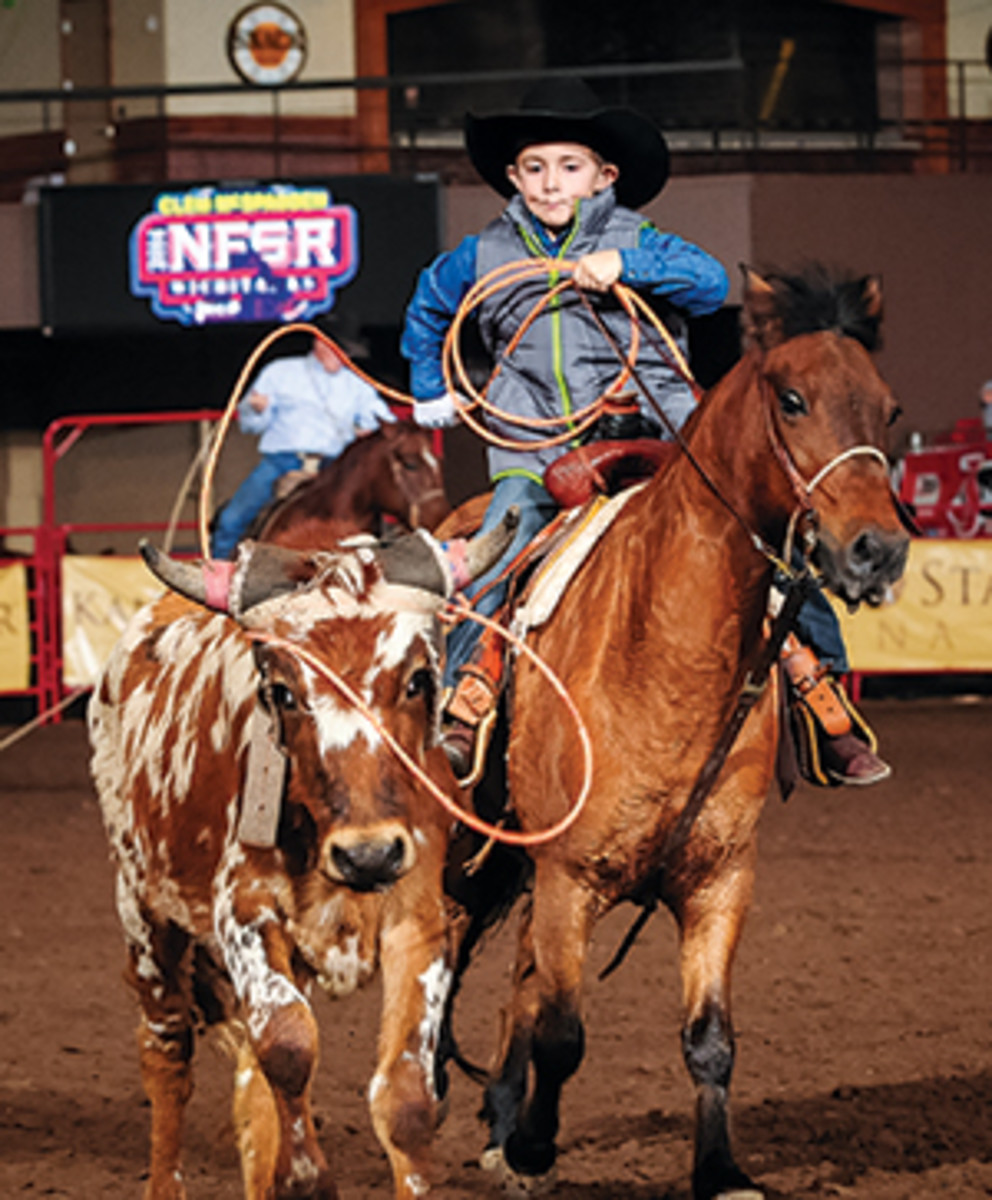Steer Roping Basics

In Texas, kids don’t start near as early as they do say in Oklahoma. Those kids are raised tripping there, and there’s kids 13 and 14 years old roping steers. It’s getting more popular down there, but a kid’s got to have good horsemanship skills and groundwork before starting. There’s so many variables in the steer roping. You’ve got to learn to control each individually before you put it all together.
Elementary
Every little piece needs to be broken down so slowly and individually before you go at it. Riding your horse, logging your horse, throwing your loop, setting your trip, and so on, it takes lots of runs to get it underneath your belt. Then when you get your string and go to make a live run, usually everything goes blank and you forget how to put it all together.
Horsemanship
A kid needs to be good with a head horse, heel horse or calf horse that knows the buttons as far as moving off your legs and using your hands. A kid has to be a horseman all the way around, whether it’s roping out in the pasture or in the arena. You’ve got to have more horse sense and cattle sense than your average roper. The guys who stand out, they’ve got the horsemanship. Outside the arena, to me, it teaches a guy how to ride and evaluate cattle. Sorting cows, you learn what works and what doesn’t, and it’s something you’ve got to get out there and do. When you feel it, you’ve got it. And that helps make it in the steer roping.
The horse
For somebody to start, you need to pick a solid horse that knows what’s going on in the game. You don’t want to start on a head horse that has potential but doesn’t know what he’s doing. It’s worth it to go buy a good older horse, that’s proven, even if he’s got some age on him. You need a horse to take care of you because you can’t be exactly perfect. Even when I’m on a green horse, I’ve got a different scenario every time I leave the box. So if folks are trying to learn the basics and get their confidence up, a green horse can make them throw in their hat after a few rodeos with $500 fees. Going the right direction and buying an $8,500 practice horse, learning how to rope the horns, lay your trip, and go ahead and tie, that made a huge difference.
Groundwork
I start kids on the ground with the dummy. You’ve got to practice tying and stringing and running off the rope, plus you’ve got to learn your dismounting with the horse going away from you. Your horse isn’t stopping and giving you momentum going forward like a calf horse. You have to get momentum going away from you at the walk, trot and then the lope. That can take some getting used to, but that’s a piece of the puzzle you can’t forget.
The angle
Heading, you’ll stay wider and go out to the left. You rope more with your tip almost. Tripping, you’ll be more behind the steer almost like the calf roping. Not to the right of them, but still tighter than team roping.
Scott Snedecor is a two-time steer roping World Champion. He teaches horsemanship schools and steer roping clinics, and he finished the 2014 season 10th in the World Standings after competing at his 13th Clem McSpadden National Finals of Steer Roping.
Forget the calf roping
Everything you’ve ever been taught your whole life when calf roping, you need to forget it in the steer roping. Lead with the heel of your hand instead of the tip of your loop. You don’t ever want your tip lower than your Ray Bans. An old timer told me that a long time ago. You don’t have to stay up and forward as much. I used to rope a lot of calves around the eyes, so this steer roping was right up my alley.
Don’t do it
The most common bad habit in the steer roping is people leaning into the legs. It’s natural to push against the steer and lean into the legs. Stand square, string your front legs, step all the way to the back, then cross as far as you can away from the steer’s body. The straighter the legs are the better. If you avoid this habit when you’re learning, you’ll be miles ahead.
Mental game
Strong focus is important after you get it going. Steer roping requires serving your time. The first year, it’s kind of like “Golly, I should have done this, I should have done that.” The second year, I started to see things. Usually by the third year, you start to get it. It’s something you’ve got to stay focused on, know that you’ve got a lot to learn and stick to the fundamentals.








